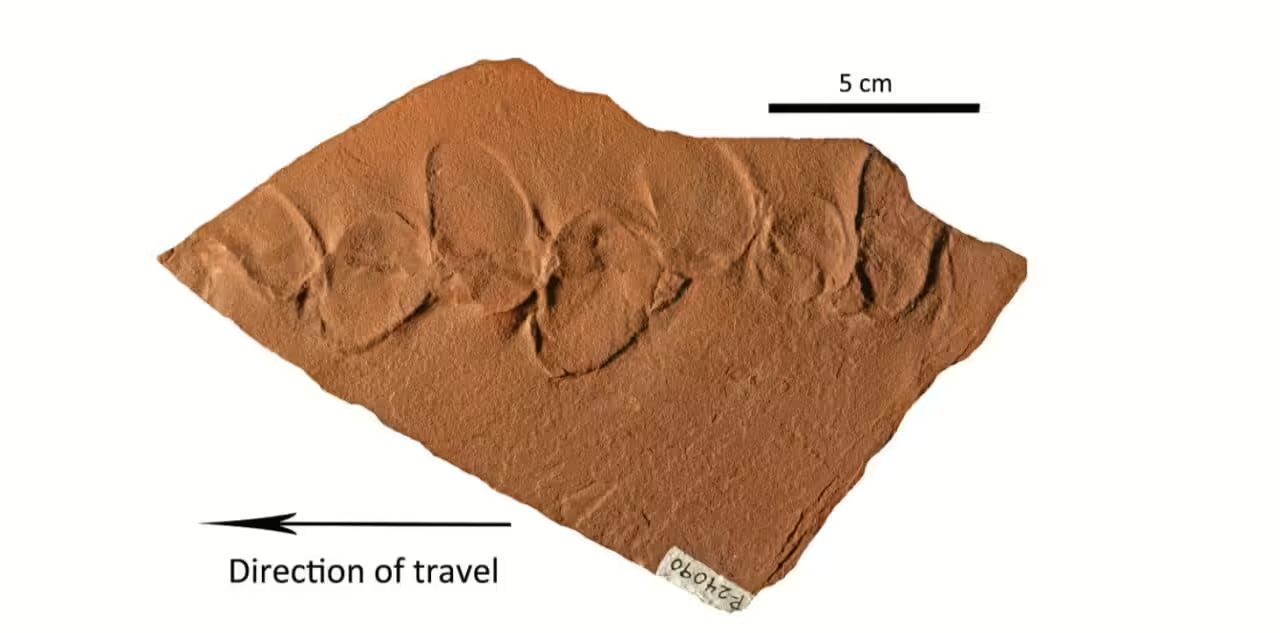Ancient animals leave behind not only the remains of bones, but also traces of their stay – for example, claw marks, burrowing, hunting, and others. Recently, American paleontologists reported the discovery of traces of a walking fish that lived about 300 million years ago. Moreover, the nature of the movement allowed to classify it as a previously unknown species.
People learn about the existence of ancient organisms mostly from their fossilized remains. Both the entire skeleton (although such finds are extremely rare) and fragments of one or two bones can be preserved. Sometimes paleontologists find soft tissues of ancient animals, dinosaur feathers, sometimes even the contents of their stomachs, which completes the idea of the diet of prehistoric creatures.
There is another class of trace fossils that are literally composed of this, called ichnofossils. These are signs reflecting walking, running, swimming, burrowing, feeding, and other activities that reveal both ecological characteristics and the evolution of movement during skeletal development. For example, in the Robledo Mountains (New Mexico, USA), deposits dating from the early Permian period (298.9–273.01 million years ago) have been recorded many traces of prehistoric quadrupeds, as well as arthropods and plants.
This time, two American paleontologists, Larry F. Rinehart and Spencer G. Lucas, discovered unique ichnofossils of a walking fish that was unknown until then. It was named Ambulopisces voigtialthough it is very similar to the representative according to the researchers Undichna britannica – another garden identified only by the traces left. The description of the find was published in the journal Historical Biology.
The total footprint, 18 centimeters long, was preserved on the siltstone slab and consists of walking marks on the pectoral fins (eight in total) and tail drags. Typical for the latter U. Britannicabut in the detected creature the amplitude of the tail movements was smaller. In addition, the traces of the pectoral fins form an intermittent sinusoid and are bent forward in the direction of movement, which in previous specimens was recorded only in strong cross-current conditions.
Part of the title Ambulopisces It consists of two Latin words, ambulance (“walking”) and pisces (“fish”), and at work It comes from the surname of Sebastian Voigt, a paleontologist who studied ichnofossils.
Marine organisms have developed many ways to move along the seabed. According to some reports, Latimeria, which has not changed for several hundred million years, uses a gait similar to the slow swimming behavior of quadrupeds. The well-known mudskippers can run and jump on coastal lands at the expense of their pectoral fins alone, and some flounders can move by clinging to the bottom with their long dorsal and anal fins.
New type A.voigti walked, pressing one pectoral fin into the substrate and bending the body around it – this brought forward the second fin, which was then pressed into the soil, and the cycle repeated. When walking, the body of the fish was above the substrate, resting on only three fins – as noted, the pectoral opening reaches six centimeters, and the body of the animal is small. According to the authors of the article, this method of movement resembles the movement of the chain catfish (Loricariidae), they lean on the spines on their fins like crutches.
Unfortunately, paleontologists have not been able to determine the paleoenvironment in which the new fish lived. Could it have surfaced like a mudskipper, or was it always underwater? All things considered, the tracks were made at a very shallow depth, when the fish’s body was not completely covered by water. However, scientists have not yet found any other supporting evidence, such as raindrops or wave marks, so there is no clear answer.
Source: Port Altele
